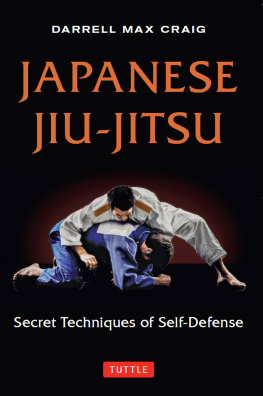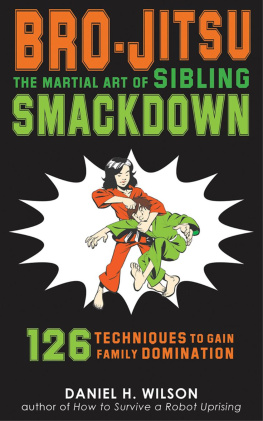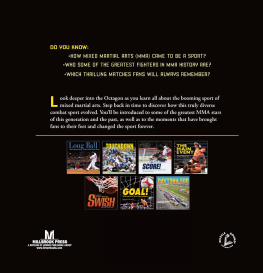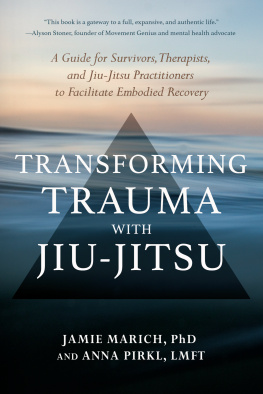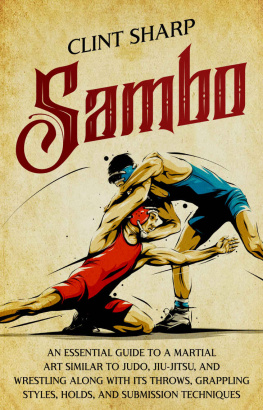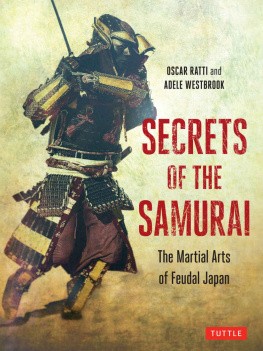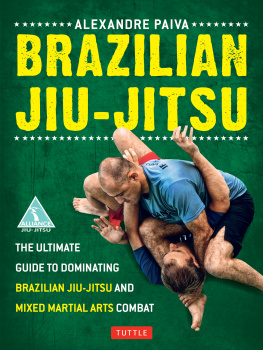ABOUT THE AUTHOR
DARRELL MAX CRAIG received his initiation into the martial arts in 1956 while assigned to the Third Marine Division in Yokusaka, Japan. He began his martial arts career with the study of karate under Master Gogen Yamaguchi of the Goju School. Mr. Craig was transferred to Okinawa in 1958, where he furthered his study of karate and began a study of Okinawan weapons, a style of weaponry historically unique to that island. In 1970 Mr. Craig began his study of kendo under Sensei Yajima. Later, in 1974, he began his study of taiho jitsu under Sensei Ichiro Hata. In 1973 he received the highest recognition in his career when he was awarded the title of Shihan by the All-Japan Karatedo Federation. Shihan is an historical title of the army of the feudal warlords and has been retained as a term of great respect in modern Japan. The title has been bestowed upon very few westerners.
During his career, Mr. Craig has competed extensively and successfully in many high-level kendo and karate tournaments. He has been a self-defense instructor for numerous governmental agencies, both federal and local, and has received commendations from the Houston SWAT Division for distinguished and meritorious service. Mr. Craig currently operates the Houston Budokan in Houston, Texas, a traditional Japanese martial arts school at which kendo, karate, jiu-jitsu, judo, and iaido are taught.
Darrell Craig holds, among others, the rank of rokudan (6th Dan) in each of Shito Ryu karate, Junse Goshin Budo jiu-jitsu, and kendo; godan (5th Dan) in Okinawan Shorin kobudo; yodan (4th Dan) in each of iaido, jodo osae, aikido, and judo; and sandan (3rd Dan) in osae aikido. Mr. Craig is the author of Iai, The Art of Drawing the Sword , (Tuttle, 1981)
The Tuttle Story
Books to Span
the East and West
Many people are surprised to learn that the worlds largest publisher of books on Asia had its humble beginnings in the tiny American state of Vermont. The companys founder, Charles E. Tuttle, belonged to a New England family steeped in publishing.
Tuttles father was a noted antiquarian dealer in Rutland, Vermont. Young Charles honed his knowledge of the trade working in the family bookstore, and later in the rare books section of Columbia University Library. His passion for beautiful booksold and newnever wavered throughout his long career as a bookseller and publisher.
After graduating from Harvard, Tuttle enlisted in the military and in 1945 was sent to Tokyo to work on General Douglas MacArthurs staff. He was tasked with helping to revive the Japanese publishing industry, which had been utterly devastated by the war. After his tour of duty was completed, he left the military, married a talented and beautiful singer, Reiko Chiba, and in 1948 began several successful business ventures.
To his astonishment, Tuttle discovered that postwar Tokyo was actually a book-lovers paradise. He befriended dealers in the Kanda district and began supplying rare Japanese editions to American libraries. He also imported American books to sell to the thousands of GIs stationed in Japan. By 1949, Tuttles business was thriving, and he opened Tokyos very first English-language bookstore in the Takashimaya Department Store in Ginza, to great success. Two years later, he began publishing books to fulfill the growing interest of foreigners in all things Asian.
Though a westerner, Tuttle was hugely instrumental in bringing a knowledge of Japan and Asia to a world hungry for information about the East. By the time of his death in 1993, he had published over 6,000 books on Asian culture, history and arta legacy honored by Emperor Hirohito in 1983 with the Order of the Sacred Treasure, the highest honor Japan can bestow upon a non-Japanese.
The Tuttle company today maintains an active backlist of some 1,500 titles, many of which have been continuously in print since the 1950s and 1960sa great testament to Charles Tuttles skill as a publisher. More than 60 years after its founding, Tuttle Publishing is more active today than at any time in its history, still inspired by Charles Tuttles core missionto publish fine books to span the East and West and provide a greater understanding of each.
Metal is tested by fire; man
is tested by what he says.
Master T. Nobushige
(15251561 A.D. )
CHAPTER ONE
Introduction
IT IS SAID that ju is the heart that may be instructed only by another heart. For that reason, until relatively recently jiu-jitsu techniques were not even written down, much less published. Jiu-jitsu has definitely been a living tradition, one handed down for centuries from teacher to student.
After much personal deliberation and encouragementbordering on outright naggingfrom my students, I concluded that a book on the subject might be a helpful study aid. Accordingly, this book represents what I have learned through my years of practice and conversations with the top taiho jitsu (jiu-jitsu) instructors from Japanese police departments. It reflects the classical art of jiu-jitsuthat is, the traditional techniques of this great art as they have been for centuriestaught in the old Japanese ryus .
The student, whether mudansha (unranked) or yudansha (ranked), who is studying with a qualified teacher hopefully will find this book a source of assistance and enlightenment, but a person who tries to learn techniques using only this book will be confused and discontented. To properly learn any martial art, one must train under a qualified teacher. At best, a book can serve only as a guide. Moreover, many techniques involved in the martial arts can be used to inflict serious injury or death. For example, various judo chokes can cause death or brain damage, and a karate strike or kick can easily be fatal. Jiu-jitsu techniques that utilize nerve and arterial pressure points can be not only excruciatingly painful but also deadly. It therefore is of utmost importance to take the study of a martial art seriously and to train under a qualified teacher who can demonstrate the proper execution of the arts techniques.
The use of a martial art as a method of self-defense is practical, albeit legally touchy. Someone with a weapon has a tremendous advantage over someone without one, especially if he is trained to use that weapon, but jiujitsu can be a defense in such a situation. A confrontation between a martial artist and an armed, but untrained, assailant could easily have fatal results for the assailant. The law decides whether a killing is murder or justifiable homicide. If an artist who killed someone admitted to feeling no threat to his life, he might well be found guilty of murder. This scenario may seem improbable, but in your training you must consider how far you are prepared to go in the use of your skills. To give or take a life is not an easy decision. A person who has mastered jiu-jitsu and, more importantly, mastered himself, will always choose to spare life wherever possible.
Since, historically, the method of teaching jiu-jitsu has been more a visual process than a verbal one, I emphasize again the importance of a qualified teacher. But it is my hope that, by studying this book and paying particular attention to its illustrations, the student will learn how to think and react in jiu-jitsu rather than becoming accustomed to being told what to do.
A Brief History of the Art
The word jiu-jitsu has been known to the western world for centuries. A contemporary dictionary defines jiu-jitsu (or ju-jutsu ) as the Japanese art of defending oneself by grasping or striking an opponent so that his own strength and weight are used against him. One of the better definitions of jiu-jitsu was given to me by Sensei Takahiko Ohtsuka. The term jiu-jitsu he said, literally means, technique or art (that is, jitsu ) of suppleness, flexibility, pliancy, or gentleness (that is, all renditions of the ideogram ju ). All these terms, however, represent a single principle, a general way of applying a technique of using the human body as a weapon in unarmed combat. Jiu-jitsu literally translates into ju , meaning flexibility or gentleness, and jitsu , meaning art or technique. Judo, a sport more commonly known today, literally translates into ju meaning gentle and do meaning way. Basically, jiu-jitsu, or techniques of combat, has been converted into judo, or techniques of sport.
Next page
